13 Butterfly Bushes That Attract Pollinators and Enhance Your Garden
Butterfly bushes are popular garden plants known for attracting butterflies and hummingbirds. They offer long-lasting blooms that add color and life to outdoor spaces. Many gardeners choose them for their ability to enhance the natural beauty of a yard.
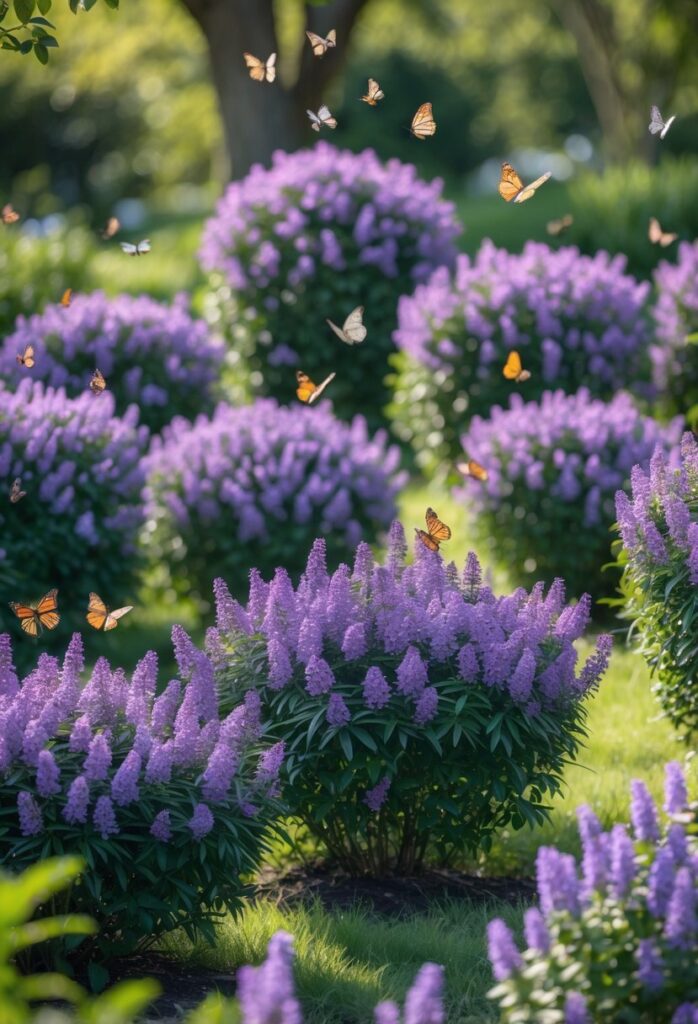
This article explores 13 different butterfly bush varieties, highlighting options that suit various garden needs and preferences. Each type has unique features, such as flower color, size, and growth habits. This selection will help gardeners find the right butterfly bush for their space.
1) Butterfly bush planting tips for optimal growth
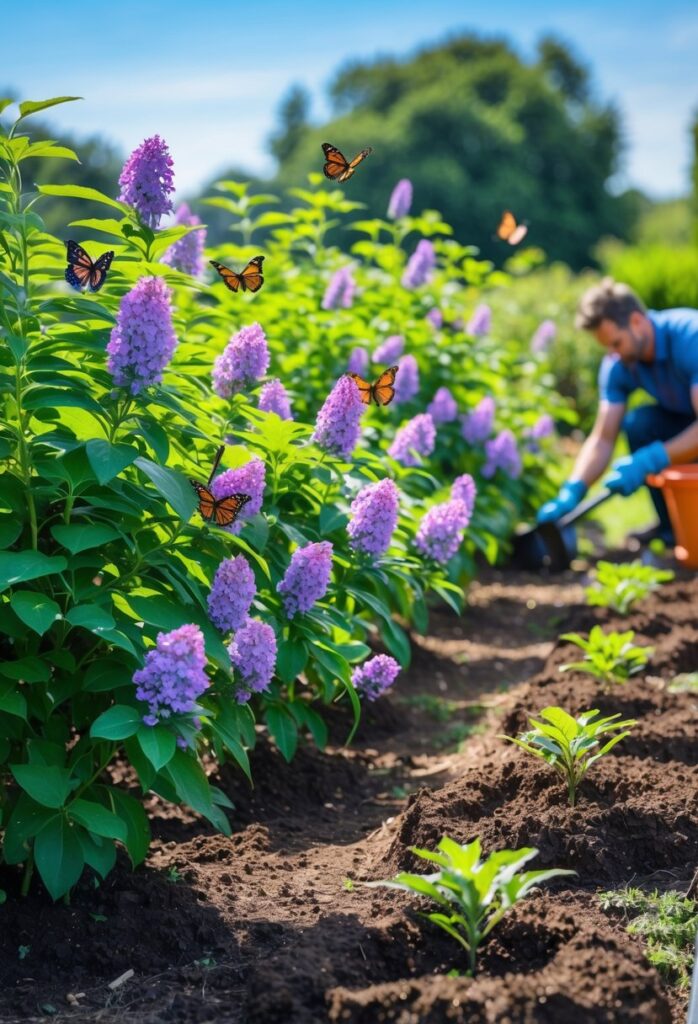
The butterfly bush needs full sun to grow well. It should get at least six hours of bright sunlight every day. Morning and afternoon sun can be combined to meet this need.
Plant the butterfly bush directly in natural soil. Avoid adding compost, potting soil, or topsoil at planting. This helps the roots adapt to the local conditions.
The soil pH should be neutral, around 6 to 7. A simple pH test can show if the soil fits this range. If not, adjustments can be made to improve growth.
Before planting, water the bush in its pot until water drains out. This keeps roots moist and helps the plant settle into new soil.
Dig a hole slightly wider than the root ball to allow space for roots to spread. Plant the bush at the same soil depth it grew in the pot.
Avoid planting in areas with poor drainage. Good drainage prevents root rot and supports healthy root growth.
These steps give the butterfly bush a strong start for healthy growth and better flowering. For more details on planting, see how to grow butterfly bushes at gardenerspath.com.
2) Choosing full sun locations for butterfly bushes
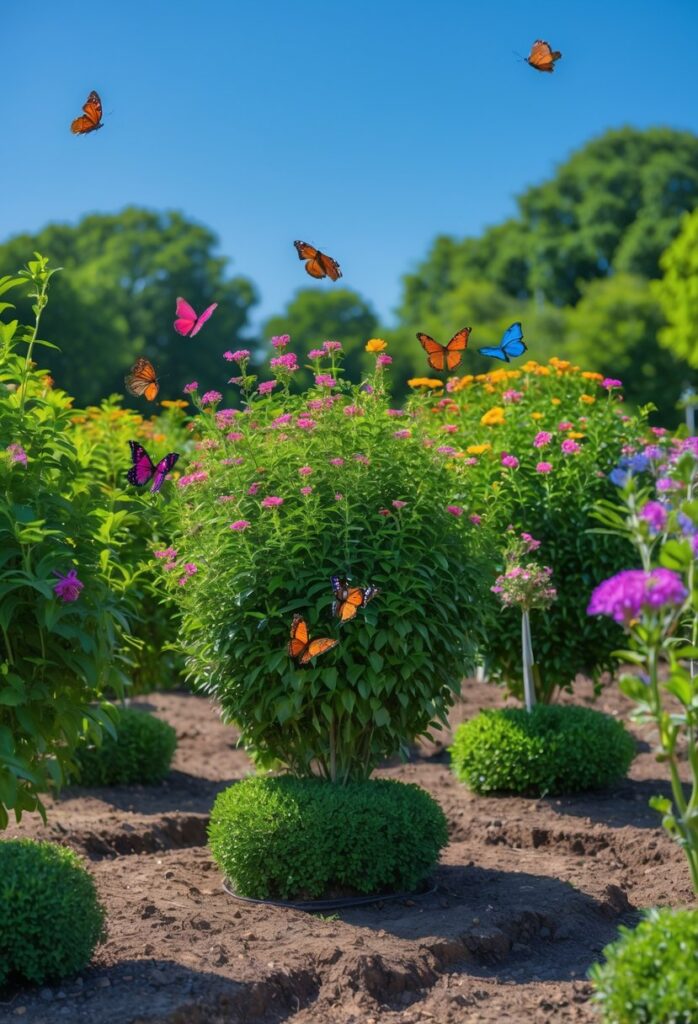
Butterfly bushes need full sun to grow well. They require at least six to eight hours of direct sunlight every day. This amount of sun helps them produce bright blooms and stay healthy.
Choosing a spot with well-drained soil is important. Standing water can harm the roots and make the plant weak. A location with loose, fertile soil works best.
Partial shade can be tolerated, but it usually reduces flowering. If the goal is to attract butterflies and get lots of colorful blooms, full sun is the best choice.
In hotter regions, some afternoon shade may help prevent the plant from drying out. But in most climates, full sun supports stronger growth and better flowering.
For more details on light needs and ideal planting spots, see guides on where to plant butterfly bushes and their sunlight requirements.
3) Best soil types for Buddleia shrubs
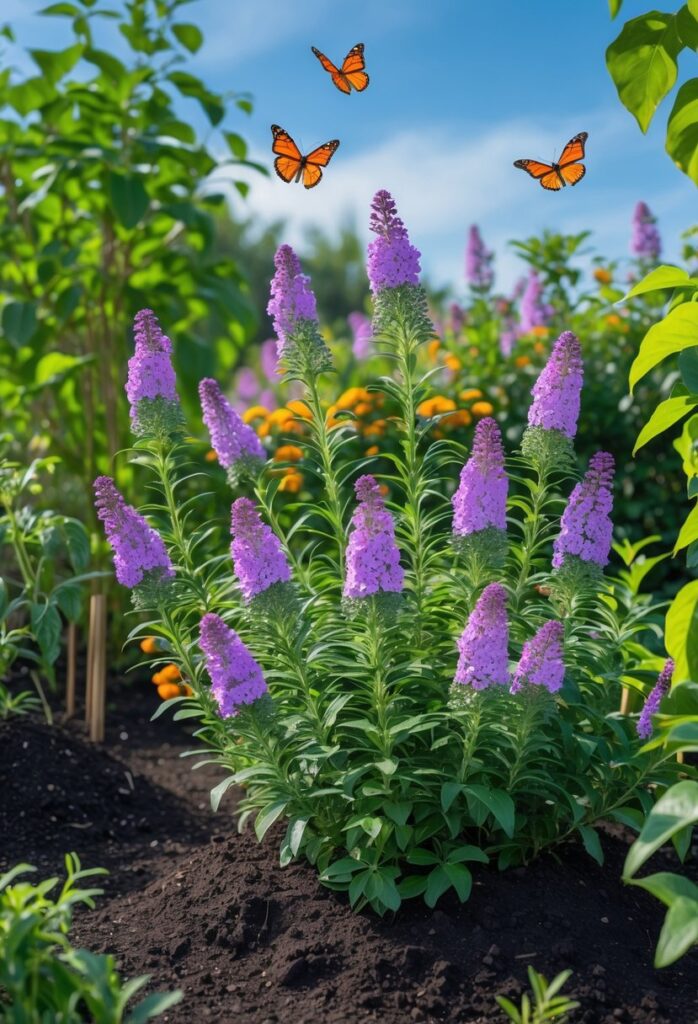
Buddleia shrubs grow best in well-draining soil. They do not tolerate waterlogged or heavy clay soils because those can cause root rot. Good drainage is essential to keep the roots healthy.
The ideal soil pH for Buddleia ranges from slightly acidic to neutral, about 6.0 to 7.0. This range supports nutrient uptake and healthy growth. However, they can tolerate a wider pH range from 5.5 to 8.5.
Soil that holds medium moisture but drains well is best for Buddleia. It thrives in soil rich in nutrients. Sandy loam or loamy soils often meet these needs well.
If the soil tends to hold too much water, planting in raised beds or mounds can help improve drainage. This allows the shrub’s roots to avoid standing water.
Because Buddleia is drought-tolerant, it can withstand dry periods once established. Still, balanced soil moisture helps the plant produce more abundant flowers.
For more details about soil preferences, visit The Institute for Butterfly Bush Soil Types.
4) Pruning butterfly bushes annually to promote blooms
Pruning butterfly bushes once a year helps them produce more flowers. It is best to prune them in late winter or early spring before new growth starts. Cutting the bush back to about 1 to 2 feet from the ground encourages strong, healthy shoots.
Butterfly bushes bloom on new wood. By trimming old branches, new flower-producing branches will grow. Removing spent flowers during the season also helps extend the blooming period.
Pruning should include cutting back flowered shoots to just above a pair of healthy buds. This allows fresh shoots to develop and bloom later. Trimming branches that grow inward or toward structures improves air circulation and keeps the plant tidy.
Even heavy pruning will not harm a butterfly bush. In fact, cutting it low every year will often give a better flower display. This annual care will keep the bush vigorous and attractive through the growing season.
For detailed pruning tips and timing, see pruning advice at Mike’s Backyard Nursery.
5) Top butterfly bush varieties: ‘Lo & Behold’ series
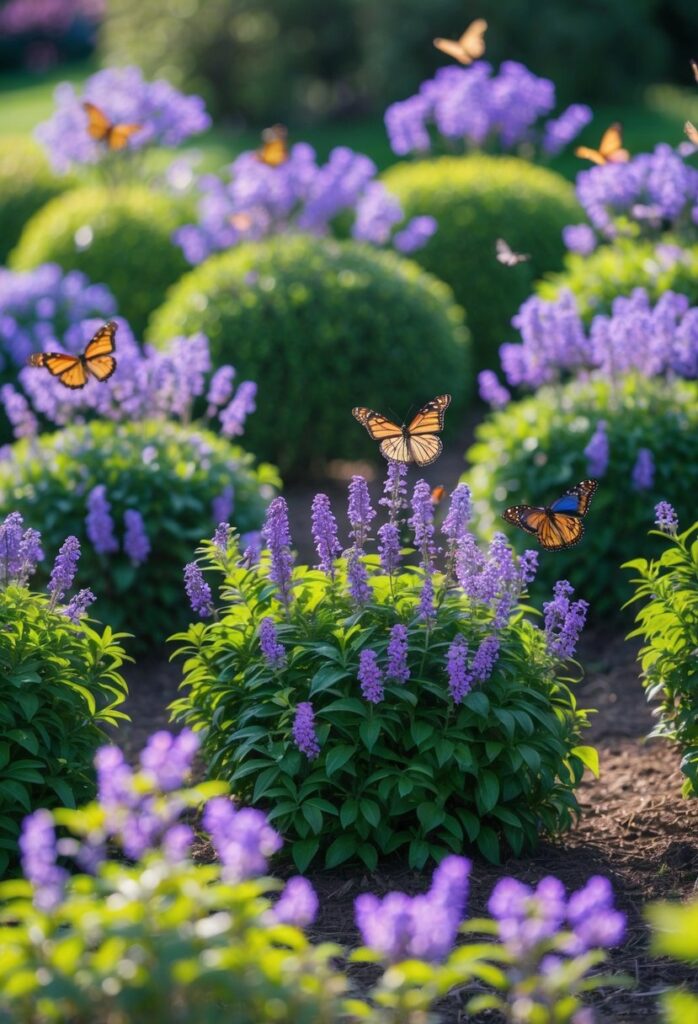
The ‘Lo & Behold’ series includes compact butterfly bushes that are ideal for small gardens or containers. These shrubs grow about 2 to 3 feet tall, making them perfect for limited spaces.
They produce vibrant flowers in colors like lavender-blue, purple, pink, and ruby red. These blooms attract butterflies and pollinators throughout the growing season.
A key benefit is that these bushes have sterile seeds, so they are non-invasive. This means they won’t spread uncontrollably and are safe for gardens in regions like Oregon and Washington.
Varieties in the series include ‘Blue Chip’, ‘Pink Micro Chip’, and ‘Purple Haze’. Each offers a slightly different look and bloom time.
Plants like ‘Blue Chip Jr.’ are drought-tolerant and deer-resistant, adding to their ease of care. They do not require deadheading, keeping maintenance low.
These features make the ‘Lo & Behold’ series a reliable choice for gardeners who want butterfly bushes without large, spreading plants. More details about these varieties are available at Great Garden Plants and Proven Winners.
6) Compact dwarf butterfly bushes for small gardens
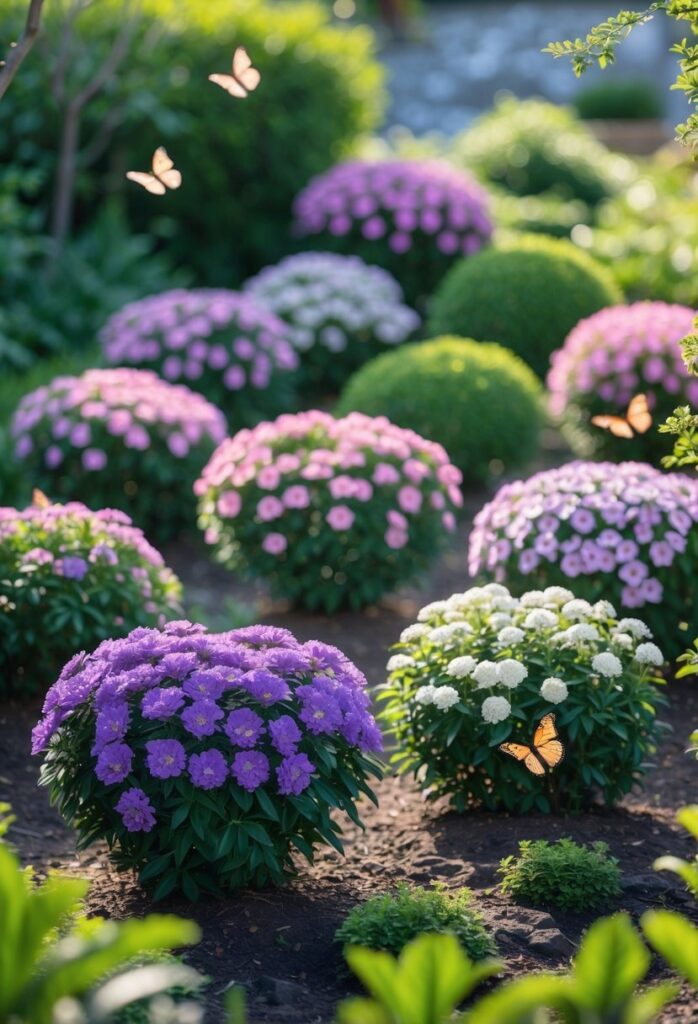
Compact dwarf butterfly bushes are ideal for small gardens or container planting. They grow only a few feet tall but still produce large, colorful blooms that attract butterflies and other pollinators.
Varieties like the Pugster Blue and Buddleia Chrysalis™ Blue offer strong flower colors in a smaller size. These bushes usually stay under 4 feet tall, making them easy to manage and fit into tight spaces.
Their thicker stems help them survive colder weather better than some larger types. Gardeners can enjoy long blooming periods without needing much space or heavy pruning.
These dwarf butterfly bushes combine beauty and practicality for any garden size. They provide the same appeal as larger bushes but take up much less room. More about these compact types can be found at Proven Winners or other nursery sites that specialize in small butterfly bushes.
For those looking to add colorful flowers in limited spaces, compact dwarf butterfly bushes are a strong choice. They bring nature and color without overwhelming the garden.
Learn more about compact butterfly bushes at the Proven Winners Pugster Blue Butterfly Bush page.
7) Fragrant butterfly bush varieties for sensory gardens
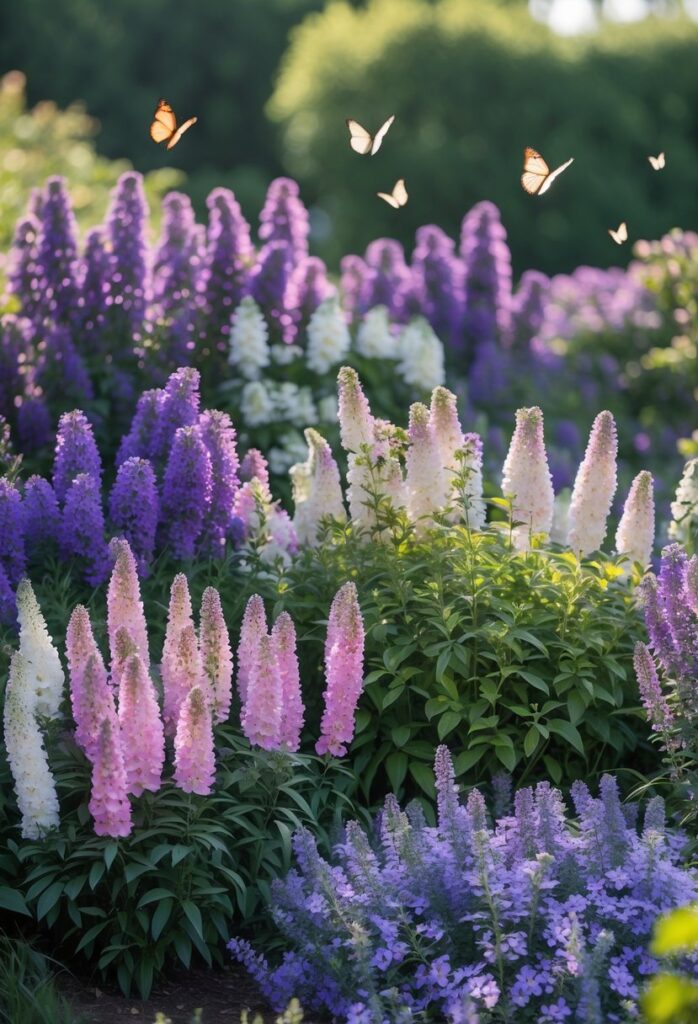
Fragrant butterfly bush varieties are popular for sensory gardens because they attract pollinators and add a pleasant scent. These bushes produce flower spikes with sweet aromas that enhance the garden’s atmosphere.
One common fragrant type is Buddleja davidii, which blooms in summer and fall. Its flowers can smell like honey or citrus. Some varieties like ‘Lochinch’ and ‘Black Knight’ are known for stronger fragrances and rich colors.
These bushes are easy to grow in many climates, making them practical for sensory gardens. They provide both visual appeal and a soothing scent. This combination supports a relaxing and engaging outdoor space.
Choosing fragrant butterfly bushes adds value for gardeners who want more than just colorful flowers. They can help create a calming place for people and a habitat for butterflies, bees, and hummingbirds. For a list of fragrant options, see butterfly bush varieties here.
8) Non-invasive butterfly bushes like ‘Miss Molly’
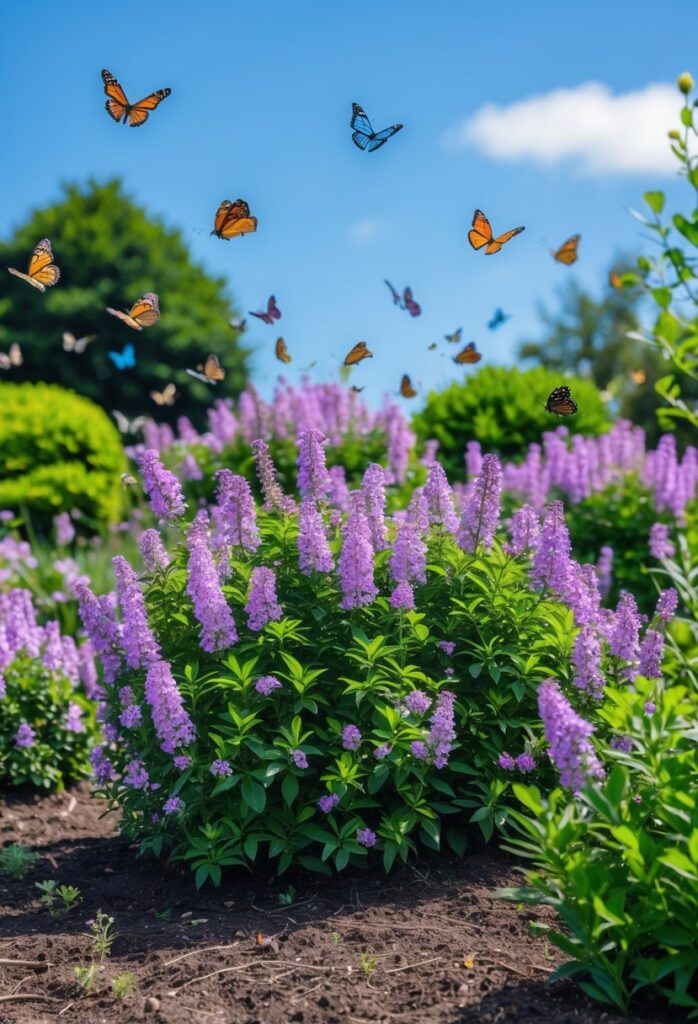
‘Miss Molly’ is a popular non-invasive butterfly bush variety. It produces silvery-green leaves that contrast well with its vibrant flowers. This bush is known for being deer resistant, making it a good choice for areas with wildlife.
It thrives in full sun and warm conditions. Unlike many butterfly bushes, ‘Miss Molly’ has a low risk of spreading aggressively in gardens. This helps protect native plants from being crowded out.
The plant reaches a moderate size and keeps a neat shape. Gardeners appreciate it for adding color without creating a weedy look. For those looking for reliable, non-invasive options, ‘Miss Molly’ is worth considering.
More information about non-invasive varieties like ‘Miss Molly’ can be found at Gardendesign.com in their section on non-invasive butterfly bushes.
9) Butterfly bushes that attract hummingbirds
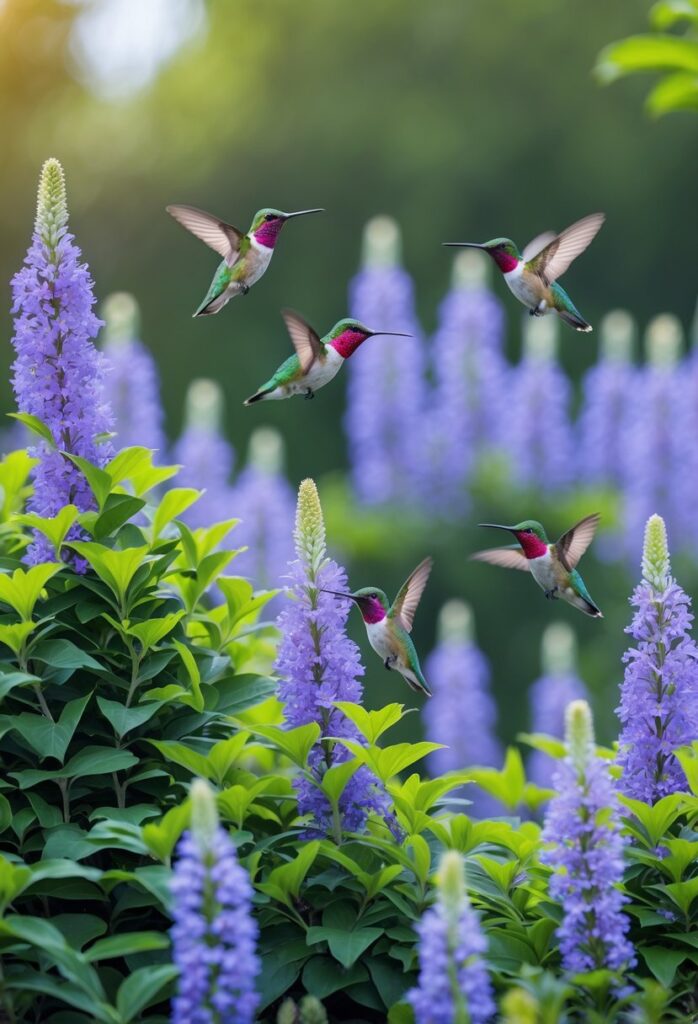
Butterfly bushes are known for their ability to attract not just butterflies but also hummingbirds. Their long, nectar-rich flowers draw hummingbirds looking for a reliable food source. These shrubs bloom from midsummer into fall, providing a steady supply of nectar.
Red and purple varieties are especially popular with hummingbirds because these colors stand out to them. The flowers’ shape and scent help hummingbirds find the nectar easily. Butterfly bushes are also low-maintenance and drought-resistant, making them a good choice for many gardens.
Besides feeding hummingbirds, these bushes support other pollinators like bees and butterflies. They work well in garden areas where you want to encourage wildlife without heavy upkeep. To learn more about how these shrubs benefit hummingbirds and other pollinators, visit plants that attract hummingbirds and butterflies.
10) Seasonal care: summer to fall blooming cycle

Butterfly bushes bloom from summer through fall. They need full sun and well-drained soil to keep blooming for months. Water the plants when the soil feels dry, but avoid overwatering.
Deadheading spent flowers helps the bush produce more blooms. Removing old flowers prevents the plant from putting energy into seed production.
Fertilizing once or twice during the season can support continuous flowering. Using a balanced flower fertilizer near the roots works best.
In late summer or early fall, prune lightly to shape the plant and remove any weak or dead growth. Avoid heavy pruning until late winter or early spring.
Proper care during the blooming cycle ensures the bush stays healthy and attractive. It also encourages strong new growth for the next season.
For more details on butterfly bush care, see this Butterfly Bush Care Guide.
11) Controlling self-seeding to prevent invasiveness
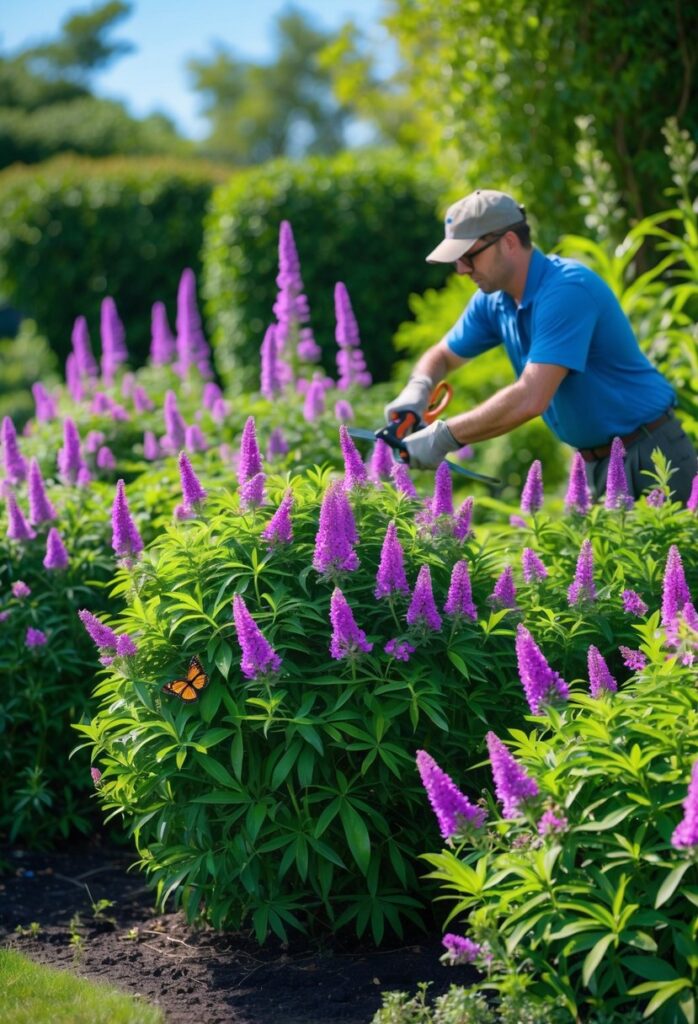
Butterfly bushes can spread quickly through self-seeding. This makes them invasive in some areas, outcompeting native plants. Controlling the spread starts with removing flowers before they produce seeds.
Deadheading, or cutting off spent flower clusters, helps stop seeds from spreading. It is important to do this regularly during the blooming season. This reduces the chance of new plants growing where they are not wanted.
If a mature butterfly bush is already established, cutting it down alone is not enough. Its roots can regrow new shoots. To fully remove it, all roots should be dug up and disposed of carefully.
Spraying herbicide on cut stumps or the entire plant can also help stop regrowth. After removal, planting native plants nearby reduces space for new seedlings. This supports local ecosystems and helps prevent butterfly bush from taking over natural areas.
More detailed advice on controlling invasive butterfly bushes can be found at GrowIt BuildIt’s guide on how to control the Butterfly Bush.
12) Watering guidelines for healthy butterfly bushes
Butterfly bushes need regular watering when they are young. During the first few weeks after planting, they should be watered every day or every other day to help them settle.
Once established, butterfly bushes become more drought-tolerant. They usually need deep watering about once a week, especially during dry spells.
It is important not to overwater, especially if the soil is clay. The soil should be well-drained to prevent water from sitting around the roots.
A good rule is to water when the top inch of soil feels dry. Deep watering helps encourage strong root growth.
Using mulch around the base can help keep the soil moist and reduce the need for frequent watering. Avoid letting the soil stay soggy, as this can harm the plant.
More detailed advice on watering can be found in the Butterfly Candy Watering Guide and the Ultimate Butterfly Bush Care Guide.
13) Using butterfly bushes to support pollinators
Butterfly bushes produce a large amount of nectar, which attracts many butterflies and bees. This makes them useful for providing food to pollinators during their adult stage.
However, butterfly bushes do not support the entire life cycle of pollinators. They are not host plants, so butterflies cannot lay eggs on them or use them for their caterpillars to grow.
Because of this, butterfly bushes can sometimes pull pollinators away from native plants that do support their full life cycle. This may hurt local pollinator populations in the long run.
Gardeners who want to help pollinators should consider native plants that offer both nectar and habitat. These plants support pollinators at all stages, unlike butterfly bushes.
Still, butterfly bushes can be part of a garden to attract butterflies briefly. Combining them with native plants creates a better environment for pollinators overall.
More details on the impact of butterfly bushes on pollinators can be found in this article about butterfly bushes and pollinator gardens.
Choosing the Right Location for 13 Butterfly Bushes
Selecting the proper site ensures healthy growth and attracts pollinators. The location must provide enough light and soil conditions to support the bushes. Spacing is also key to avoid overcrowding and to help each plant thrive.
Soil and Sunlight Requirements
Butterfly bushes need full sun, meaning at least six hours of direct sunlight daily. This exposure helps them produce flowers and stay vigorous.
The soil should be well-draining to prevent root rot. Sandy or loamy soils work best. It is important to avoid heavy clay or waterlogged areas.
Adding organic matter like compost can improve soil quality. This helps retain moisture without keeping soil soggy. Slightly acidic to neutral soil pH (6.0 to 7.5) is ideal.
Spacing Recommendations
Plant each butterfly bush at least 5 to 8 feet apart. This spacing allows air to circulate and reduces disease risk.
If the bushes grow large varieties, closer to 8 feet is best. For smaller or dwarf types, 5 feet apart can work.
Arrange the bushes so taller ones are toward the back if in a border. This keeps flowers visible and foliage manageable.
Proper spacing also lets roots spread without competition, supporting healthy growth for all 13 bushes.
For more detailed planting tips, visit this butterfly bush care guide.
Care and Maintenance Tips
Butterfly bushes need steady care to thrive and bloom well. Proper watering supports healthy roots, while the right pruning keeps the plant vigorous and encourages more flowers.
Watering and Fertilizing
Butterfly bushes prefer well-drained soil and should be watered only when the top inch of soil feels dry. Overwatering can cause root rot, so it’s important to avoid standing water. Deep watering helps the roots grow strong by reaching deeper layers of soil.
Fertilizing once a year in early spring is usually enough. A balanced, slow-release fertilizer supports steady growth. Too much fertilizer can lead to more leaves and fewer flowers, so it is best to follow package instructions carefully.
Pruning Guidelines
Pruning butterfly bushes helps maintain shape and promotes new blooms. It is best to prune in late winter or early spring before new growth starts.
Cut back the previous year’s growth to about 12 inches from the ground. This encourages strong growth and more flowers. Removing dead or weak branches can improve air circulation and reduce disease risk.
Deadheading spent flower spikes during the growing season can also extend blooming. Sharp, clean tools should be used to make smooth cuts and avoid damage.
Frequently Asked Questions
Butterfly bushes can grow quite large, need specific care, and sometimes raise concerns about their impact on local environments. Different laws may apply to planting them, and knowing how to recognize their leaves can help gardeners manage these shrubs properly. Finding healthy plants for purchase and learning the right care techniques ensures they thrive.
How large do butterfly bushes typically grow?
Butterfly bushes usually grow between 6 to 10 feet tall. They can also spread 4 to 10 feet wide, developing an open, arching shape. Their size depends on the variety and growing conditions.
Why might butterfly bushes be considered harmful to the environment?
These shrubs can spread aggressively. They do not serve as host plants for butterfly larvae, which limits their ecological value. Several species are non-native and can crowd out native plants, affecting local ecosystems.
What are the legal restrictions on planting butterfly bushes in certain states?
Some states classify butterfly bushes as invasive and restrict or ban their planting. These rules aim to prevent the spread of non-native shrubs that can threaten native flora. Checking local regulations is important before planting.
How do I identify butterfly bush leaves?
The leaves are long, narrow, and usually lance-shaped with a pointed tip. They often have a light green color and may feel slightly fuzzy or rough when touched. The leaf arrangement is opposite along the stems.
Where can I find butterfly bushes available for purchase?
Butterfly bushes are commonly sold at garden centers, nurseries, and online plant retailers. Choosing reputable sellers ensures healthier plants and proper variety information.
What care do butterfly bushes require to thrive?
They grow best in full sun and well-drained soil. Annual pruning encourages more blooms. Removing spent flowers helps maintain their shape and promotes new growth. Planting in rich, slightly acidic soil can support stronger growth. For more details, see this complete butterfly bush care guide.
